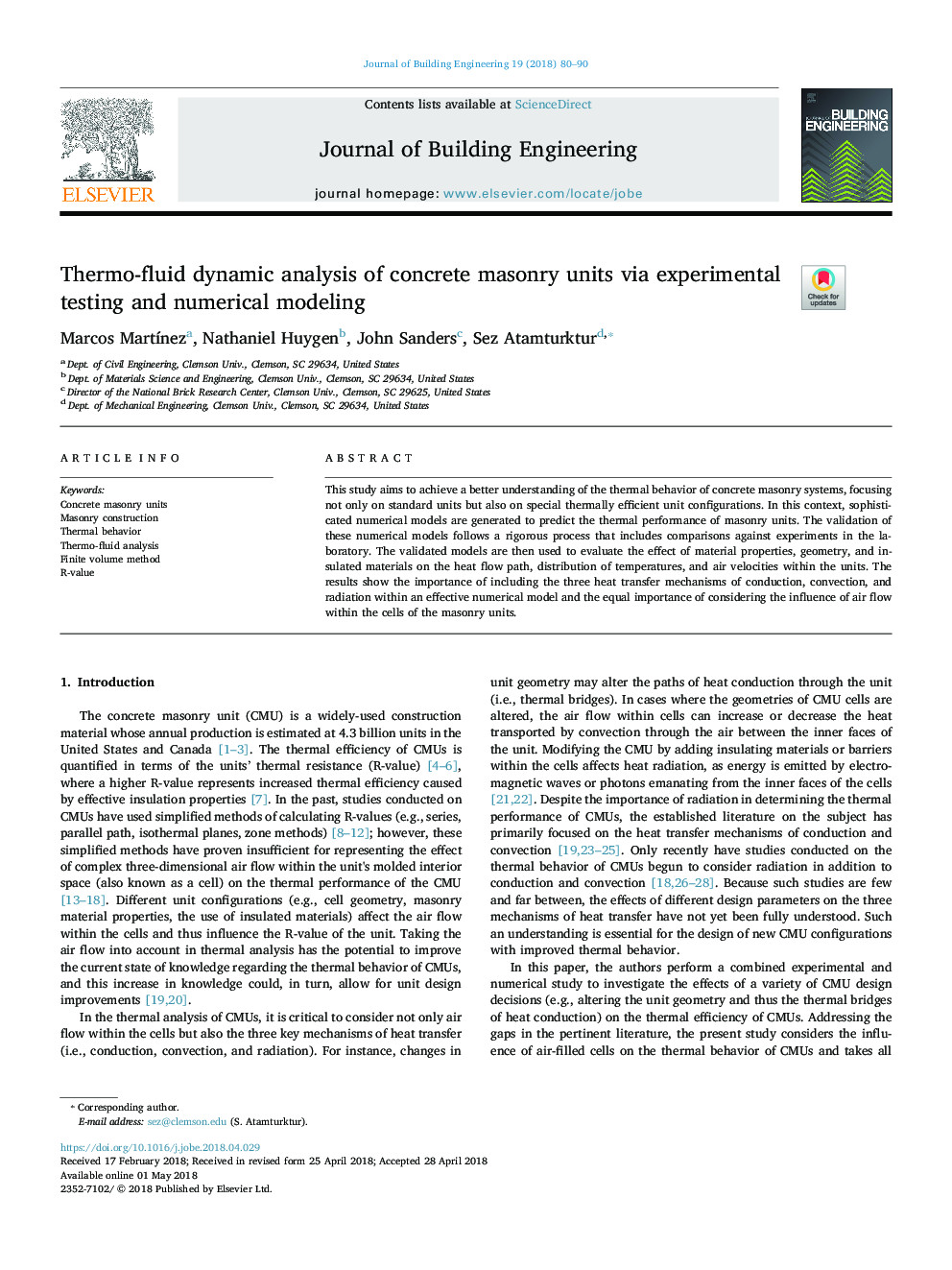| Article ID | Journal | Published Year | Pages | File Type |
|---|---|---|---|---|
| 6749731 | Journal of Building Engineering | 2018 | 11 Pages |
Abstract
This study aims to achieve a better understanding of the thermal behavior of concrete masonry systems, focusing not only on standard units but also on special thermally efficient unit configurations. In this context, sophisticated numerical models are generated to predict the thermal performance of masonry units. The validation of these numerical models follows a rigorous process that includes comparisons against experiments in the laboratory. The validated models are then used to evaluate the effect of material properties, geometry, and insulated materials on the heat flow path, distribution of temperatures, and air velocities within the units. The results show the importance of including the three heat transfer mechanisms of conduction, convection, and radiation within an effective numerical model and the equal importance of considering the influence of air flow within the cells of the masonry units.
Related Topics
Physical Sciences and Engineering
Engineering
Civil and Structural Engineering
Authors
Marcos MartÃnez, Nathaniel Huygen, John Sanders, Sez Atamturktur,
